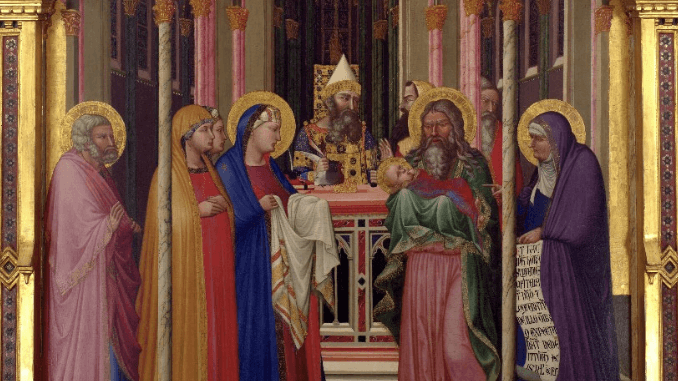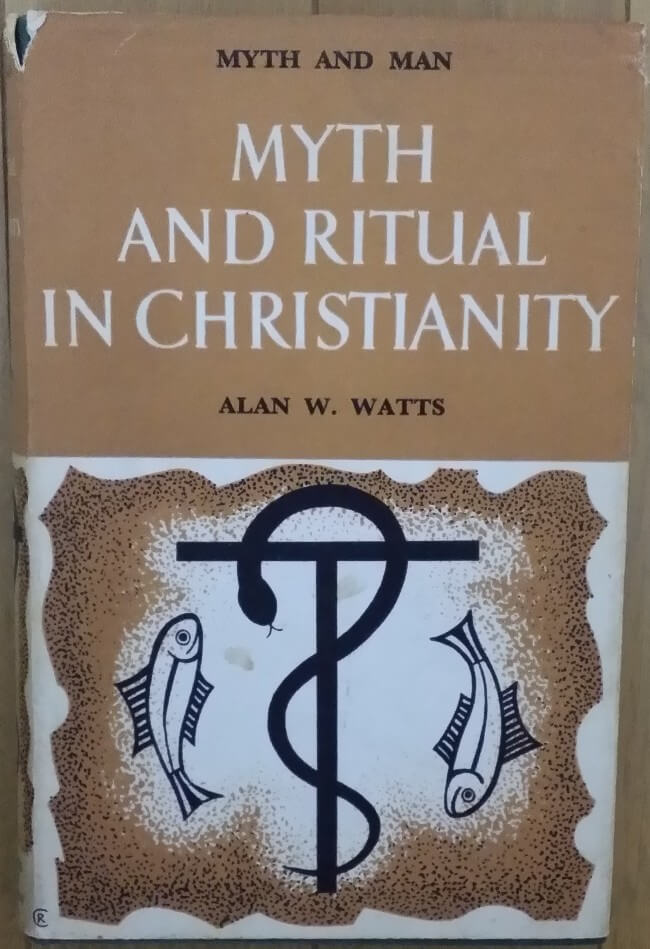
The day after Saint Brigid’s Day is Candlemas, which is the day on which all the candles which will be used in the ceremonies of the church for the next year are blessed, and at the same time it is the commemoration of the Purification of the Virgin Mary, forty days after the birth of Christ, and the day also honours the Presentation of Christ in the Temple in Jerusalem.
Candlemas and The Presentation of Christ are both purification rites that also mark the midway point between Christmas (or the Winter Solstice) and Spring (or Easter, or the Spring Equinox) during the liturgical season of Epiphany.
Alan Watts on Candlemas
Alan Watts wrote about Candlemas in his book, Myth and Ritual in Christianity which was first published in 1954, making clear the connection between blessing the “lights” and the High Priest Simeon’s confession of Christ in Saint Luke’s gospel:
Finally, the rites of the Incarnation reach their climax with the Feast of the Purification [of the Virgin] on February 2nd, otherwise known as Candlemas. For at this time the Church blesses all the lights to be used in its ceremonies throughout the year, since it was at Christ’s Presentation in the Temple that Simeon called him “the Light to lighten the Gentiles, and to be the glory of thy people Israel”, in the canticle Nunc Dimittis…
Alan Watts, Myth and Ritual in Christianity, p. 127.
Nunc Dimittis
The Nunc Dimittis is sung each evening at Compline, or sung or said in the Anglican service of Evening Prayer:
Candlemas and the Incarnation
The clergy and congregation process around the church with lighted candles as if,
The Sun which first shone in the cave [i.e. the stable where Christ was born] has now given forth an ocean of stars.
Alan Watts, Myth and Ritual in Christianity, page 128.
And he continues,
The entire theme of the Incarnation is the transformation of manhood into God – the birth or awakening of the diving and eternal nature in man as his true Self.
Alan Watts, Myth and Ritual in Christianity, page 128
Christ is one Person (hypostasis) in two Natures, true God and “complete and perfect” Man, not as the Nestorians believed, “a” man, but MAN.

Was Alan Watts a Christian?
Given this, you may wonder, “was Alan Watts a Christian?” I think the best answer is “yes and no.”
Yes, in the literal sense that he took Holy Orders and was an Anglican vicar for a few years.
No, in the sense that he struggled with theological dogma and eventually left the church to pursue his interest in Buddhism, where his true passion lay.
But also “yes” in the sense that, as we see here in his comments on the significance of Candlemas, his connection with the Prisca Theologia that shines through the Christian mythos when one opens ones eyes and “sees thy salvation.” That is Watts achievement in relation to Christianity, and which his book Myth and Ritual in Christianity so ably and gracefully expresses.
DH
